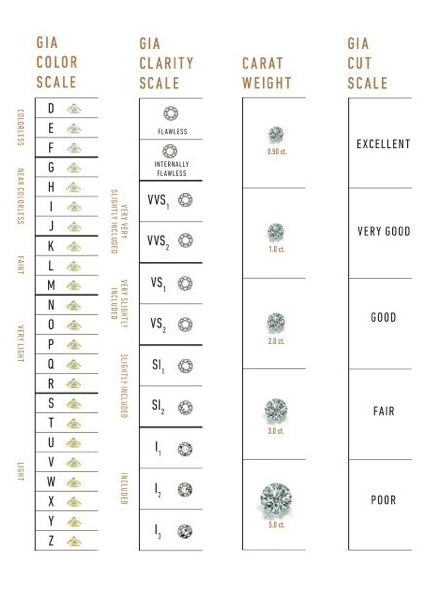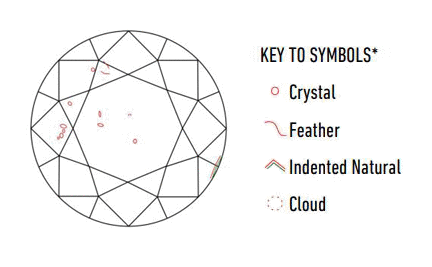Welcome back to the Diamonds Hatton Garden blog where we share our latest insights from our family run team of Hatton Garden Jewellers. It goes without saying that buying a diamond engagement ring can be a daunting experience. With so many choices to consider, a lot of new information and the pressure to make the right choice, it can be overwhelming. Based on the conversations we have had with our clients we want to share our knowledge and experience, over 40 years, with a new series to the 4 Cs of diamonds. In today’s blog we start with a beginners guide to diamond clarity.
What is diamond clarity?
Diamond clarity, as the name suggests, refers to the internal clarity of a diamond. Inclusions, or a lack of clarity, can affect the amount of brilliance and sparkle that the diamond has.
How is diamond clarity graded?
The universal standard for assessing the quality of a diamond was introduced by the Gemological Institute of America (GIA) around the middle of the 20th century. Tis standard is used to examine the characteristics of a diamond – including its clarity. The GIA describes clarity as “the appearance and placement of characteristics both inside the diamond and on its surface”.
Evaluating diamond clarity involves determining the number, size, relief, nature, and position of these characteristics, as well as how these affect the overall appearance of the stone. If you are trying to determine what is the best clarity for a diamond, remember that no diamond is perfectly pure. But the closer it comes to purity, the better its clarity.
The GIA Diamond Clarity Scale has 6 categories, some of which are divided, for a total of 11 specific grades.
- Flawless (FL) No inclusions and no blemishes visible under 10x magnification
- Internally Flawless (IF) No inclusions visible under 10x magnification
- Very, Very Slightly Included (VVS1 and VVS2) Inclusions so slight they are difficult for a skilled grader to see under 10x magnification
- Very Slightly Included (VS1 and VS2) Inclusions are observed with effort under 10x magnification, but can be characterised as minor
- Slightly Included (SI1 and SI2) Inclusions are noticeable under 10x magnification
- Included (I1, I2, and I3) Inclusions are obvious under 10x magnification which may affect transparency and brilliance

What are inclusions?
An inclusion is the presence of carbon that did not convert into the structure we know as a diamond during the formation of the stone. In fact, an inclusion can be seen as a birthmark within the diamond so to speak. Almost all diamonds have inclusions and the rarest of all diamonds in terms of clarity are graded as flawless diamonds that, according to the GIA, have “No inclusions and no blemishes visible under 10x magnification”. There are also various types of inclusions that each cause a specific effect:
- Pinpoint inclusions are the most common type of diamond inclusion. They are essentially tiny black spots, like blackheads on skin, which are noticeable on the table of a diamond.
- Feather inclusions are the second most common, and possibly one for concern. They are small internal cracks, and if they are present from top to bottom, the diamond’s durability could be compromised.

Clarity in relation to the 4cs
How important is diamond clarity in relation to the other 4 cs? Choosing a diamond is a careful balance between these 4 important characteristics where each plays a role in shaping the overall look of the diamond. Some diamond cuts, such as the brilliant cut are more forgiving as to how visible inclusions are whereas other cuts with large crowns such as pavilions, emeralds, princesses and pears accentuate inclusions. With diamonds that accentuate inclusions it is important to choose a higher clarity whereas with those that hide inclusions better it’s possible to drop lower on the clarity scale. Some experts also believe that clarity should come second to colour, and that the beauty of a super white diamond is so wonderful that it outweighs a few inclusions.
Unsure about diamonds? At Diamonds Hatton Garden our team of family-run jewellers have assisted generations of clients to find their diamond and piece of diamond jewellery. Contact our team via harel@diamondshg.co.uk or call +44 7951 060238 for more information and to arrange your appointment. Alternatively, explore our selection of fancy coloured yellow diamonds for sale and if you are looking to buy fancy Pink diamond jewellery contact our team as well as viewing our latest Diamond earrings in Hatton Garden.

